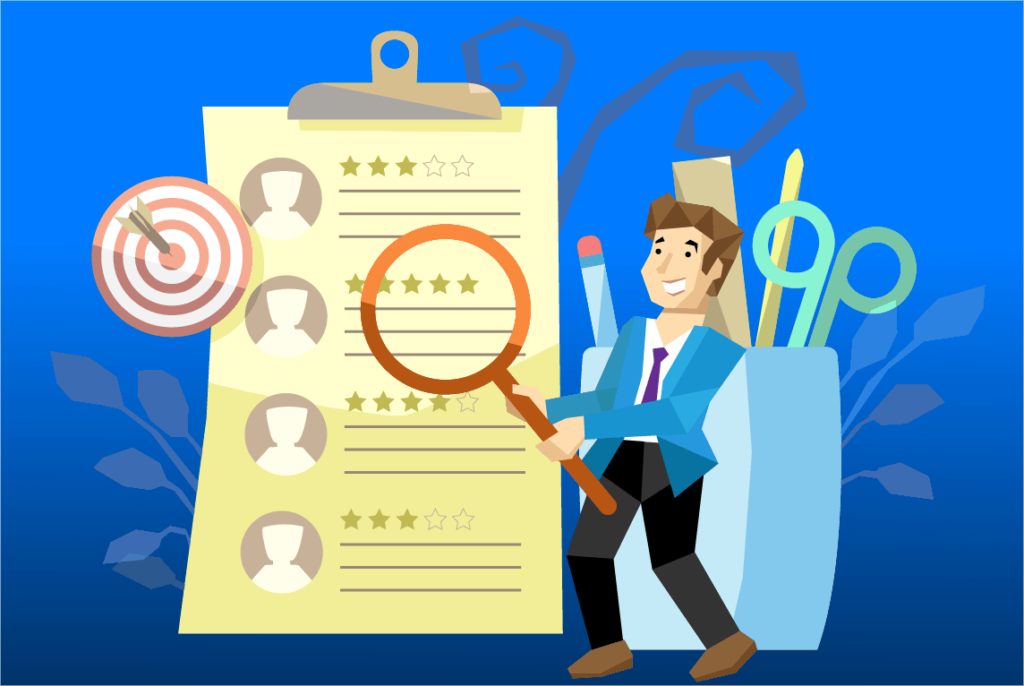What’s the Difference Between Customer Profiles and Buyer Personas?

Good marketing is all about communication: finding your audience on the right platforms, at the right time, with the right message.
But all of those factors hinge on having a solid understanding of who you’re trying to communicate with. If you don’t know enough about the people most likely to purchase your products or services, you won’t be able to attract an audience and convert them into customers.
Two of the common ways that marketers gain this understanding of their audiences are buyer personas and ideal customer profiles. While some might use these terms interchangeably, this is an incorrect usage. There are actually subtle differences between the two. Let’s start by looking at the individual definitions of a buyer persona and an ideal customer profile, then discussing when to use each one.
The Definition of an Ideal Customer Profile
An ideal customer profile defines attributes of the companies you want to have as clients. Attributes of your ideal customer profile include industry, number of employees, annual revenue, and location.
Key Features of an Ideal Customer Profile
To describe it broadly compared to a buyer persona, an ideal customer profile is more quantitative in nature. It’s concerned with less of the individual people you interact with and more about the demographics and measurable traits of their organization.
According to Inc., the four critical elements in a successful ideal customer profile are:
1. Industry – Broad examples include healthcare, legal, education, and others. The deeper into an industry you can go, the better. “Yoga studios” is better than “fitness companies,” for example.
2. Company Size – There’s a massive difference between marketing to a local business of five people and marketing to an enterprise with thousands of employees.
3. Department – Is your product or service something used by the company’s accounting team? Or does it help their salespeople work more efficiently?
4. Job titles – This defines the specific type of person at the company you want to interact with. Some marketers may prefer to save this for their buyer personas, but you’ll find job titles in both types of profiles.
The Definition of a Buyer Persona
According to HubSpot, a buyer persona is “a semi-fictional representation of your ideal customer based on market research and real data about your existing customers.” It’s typically created by interviewing one or more real customers.
Key Features of a Buyer Persona
Whereas an ideal customer profile is concerned with numbers and categories that can be measured, a buyer persona is more personal and qualitative. It’s less about the hard characteristics of your client company and more about the personal narratives of the people who work there.
One distinctive of a buyer persona is they tend to be assigned actual names that are alliterations based on their industries.For example, let’s say you sell a software product that can be used by companies in several industries. You might have a persona for your restaurant clients called “Restaurant Ralph.” If you sell to designers, the corresponding persona might be called “Designer Denise.”
Defining and Focusing on The Primary Buyer Persona
To define a buyer persona, you’ll want to include things that are harder to measure, but still important to your potential customers. This includes traits like:
- Desires – what does your buyer persona want to gain or achieve? This could be both personal or professional.
- Challenges – what is stopping your buyer persona from achieving the above desires?
- Outside interests – what do they like to do when they aren’t handling work tasks?
- Communities – what communities do they turn to for news and information?
Some companies will even create personas of the people they want to avoid working with. These are called negative buyer personas. They’ll tell you who to avoid in your marketing campaigns, but they are a more advanced tactic. If you’re new to buyer personas or ideal customer profiles, don’t worry about negative personas yet.
Ideal Customer Profile vs. Buyer Persona: What’s the Difference?
We’ve now touched on both the high-level definitions of an ideal customer profile and a buyer persona, and provided some examples of the characteristics you’ll typically find in each one.
As mentioned, a good rule of thumb to distinguish the two is that ideal customer profiles usually focus on the client company, whereas buyer personas focus on the people at the client company. Personas are more narrative and personal, while ideal customer profiles are more related to data and quantitative categories.Now let’s take a look at the best scenarios to use each of these different customer descriptions.
When Does Using an Ideal Customer Profile Make Sense?
An ideal customer profile is best to use when you are defining a customer base. A defined segment that your company will service or target. Those companies that fit with your geo location, budget requirements, characteristics that will presumably yield a successful relationship.
When Does Using a Buyer Persona Make Sense?
The rule of thumb here is whenever you are trying to appeal to your customers’ feelings, needs, challenges, or make a personal connection, you should lean on your buyer persona.
One specific example of when buyer personas work well is in planning and creating content. Most good advice will tell you to write your content as if it was directed to a single person. It makes sense for that person to be the persona of the prospects you want to convert into customers.
Why is this technique so powerful? Because when you write to a specific persona, you exclude the things that don’t matter to your audience. This makes people really feel like you are talking about them. Have you ever been listening to a video or reading a blog post and thought, “Wow, that describes me to a T!” If so, it’s likely that the company responsible for creating the content did a good job creating a buyer persona – and that persona probably looks like you!
Buyer personas are also good to use for mapping your buyer’s journey. This is where things start to get a little sophisticated, so if you haven’t even created a persona yet, you may want to forget about this part for now. But if you’ve got a persona or two that you feel confident in and want to take things to the next level, you should map that persona to the buyer’s journey. This journey simply dictates each step a prospect has to take to go from being a complete stranger to becoming a customer.
Using Personas to Map Content to the Buyer’s Journey
HubSpot divides the buyer’s journey into three phases: Awareness, Consideration, and Decision. In the first stage, the prospect knows they have a problem and are just beginning to learn more about that problem. The Consideration stage means they understand the specific nature of their problem and are researching solutions. And the Decision stage means they have decided on a solution and are now simply looking for a provider (or deciding they should solve the problem in-house).
When you are working with buyer personas to create content, always make sure to consider these personas in the context of the specific stage of the buyer’s journey. Here’s an example: your company sells ergonomic chairs to help people with their seated posture. Your two biggest industries are banking and healthcare. It’s not enough to just think about what a healthcare purchaser may be interested in reading – you have to think about what a healthcare purchaser at the earliest stages of purchasing may be interested in reading, then compare that to what they’d want to read later in the buyer’s journey when they already know what problem they need to solve.
It may sound a bit complex, but as you get more practice working with buyer personas and journeys, you’ll get better and better at mapping your content like this.
Which Should I Focus On?
Asking whether you should focus more on buyer personas or ideal customer profiles is the wrong question. A healthy marketing program needs both. A better question to ask is when to use each type of profile.
Ideal customer profiles help you understand larger groups and segments of your potential clients with quantifiable data. Buyer personas help you understand the deeper goals, values, and challenges of the people who make and influence buying decisions. When you understand how to create and apply both of these important concepts in digital marketing, you will find that your sales, conversion rates, and customer retention numbers all increase steadily.









